
Creating a garden that attracts butterflies and bees not only brings vibrant colors and life to your space but also supports local ecosystems by aiding in the pollination of plants. These insects are crucial for the reproduction of many plants, including those that produce fruits, vegetables, and nuts. Here’s a comprehensive guide to choosing and caring for plants that will turn your garden into a haven for these essential pollinators.
Understanding Pollinators: Butterflies and Bees
Before delving into specific plants, it’s important to understand the role of butterflies and bees in the garden.
Butterflies

Butterflies are attracted to bright flowers and need nectar as their primary food source. They are particularly drawn to plants with flat-topped or clustered flowers that provide a landing platform.
Bees

Bees are also nectar feeders but are more diverse in their plant preferences. They are attracted to flowers of various shapes and colors, and they collect pollen as well. Bees tend to prefer blue, purple, and yellow flowers.
Key Plants to Attract Butterflies and Bees
1. Milkweed (Asclepias spp.)
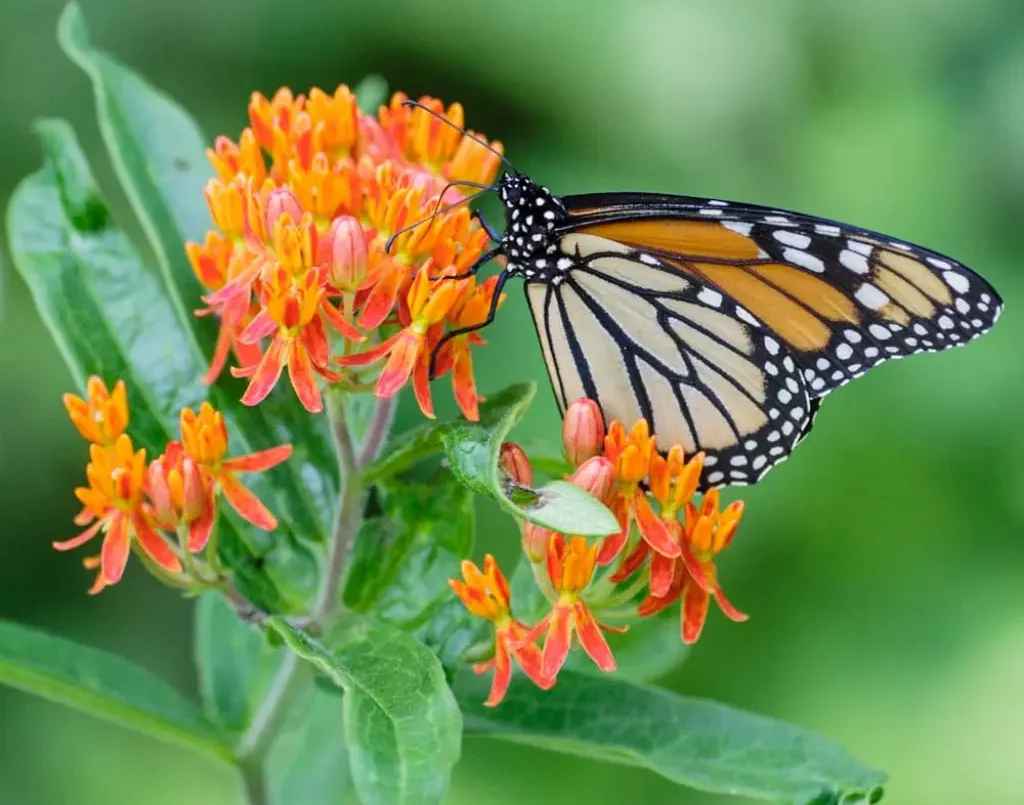
Milkweed is a crucial plant for attracting monarch butterflies. Monarchs lay their eggs on milkweed, and the larvae (caterpillars) feed exclusively on this plant. It’s also a great nectar source for a variety of bees.
- Common Species: Asclepias tuberosa (Butterfly Weed), Asclepias incarnata (Swamp Milkweed)
- Growing Conditions: Full sun, well-drained soil
- Bloom Time: Summer to early fall
2. Lavender (Lavandula spp.)
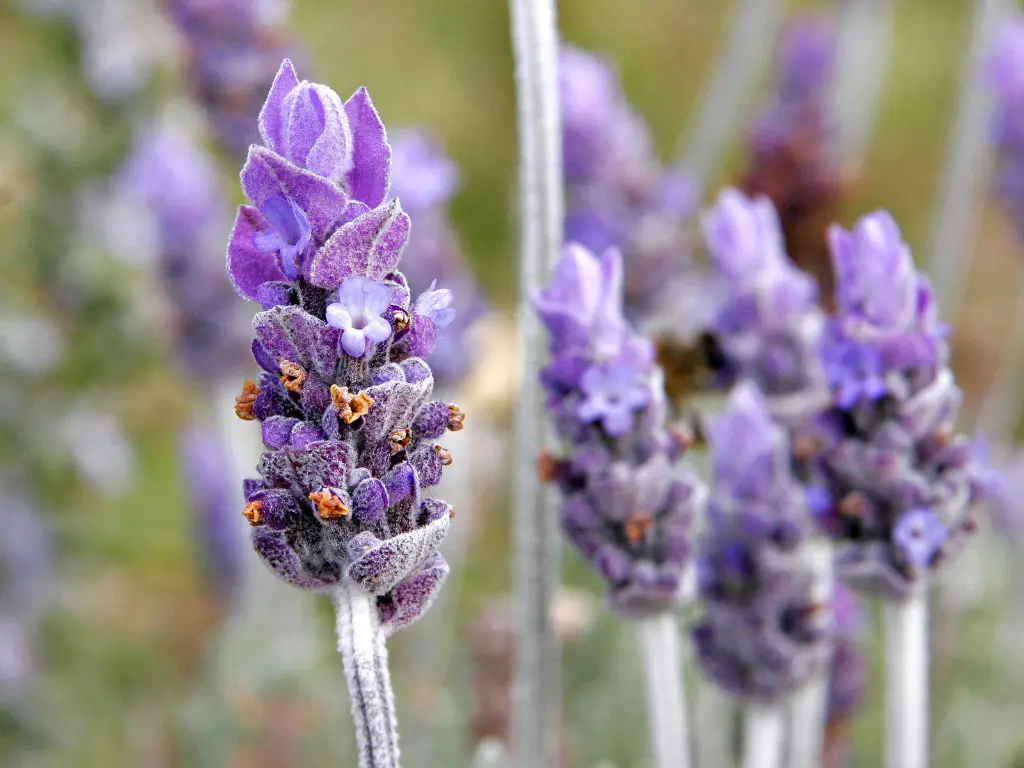
Lavender is not only a favorite for its fragrance but also for its attractiveness to bees and butterflies. Its long blooming period and ease of growth make it a garden staple.
- Common Species: Lavandula angustifolia (English Lavender), Lavandula stoechas (Spanish Lavender)
- Growing Conditions: Full sun, well-drained soil
- Bloom Time: Late spring to summer
3. Coneflower (Echinacea spp.)

Coneflowers are hardy perennials that attract a wide range of pollinators, including butterflies and bees. Their large, vibrant blooms are a significant source of nectar.
- Common Species: Echinacea purpurea (Purple Coneflower), Echinacea pallida (Pale Purple Coneflower)
- Growing Conditions: Full sun to partial shade, well-drained soil
- Bloom Time: Mid-summer to fall
4. Bee Balm (Monarda spp.)

Bee Balm is a magnet for bees, butterflies, and even hummingbirds. Its bright, tubular flowers are perfect for long-tongued pollinators.
- Common Species: Monarda didyma (Scarlet Bee Balm), Monarda fistulosa (Wild Bergamot)
- Growing Conditions: Full sun to partial shade, moist soil
- Bloom Time: Summer
5. Black-eyed Susan (Rudbeckia hirta)
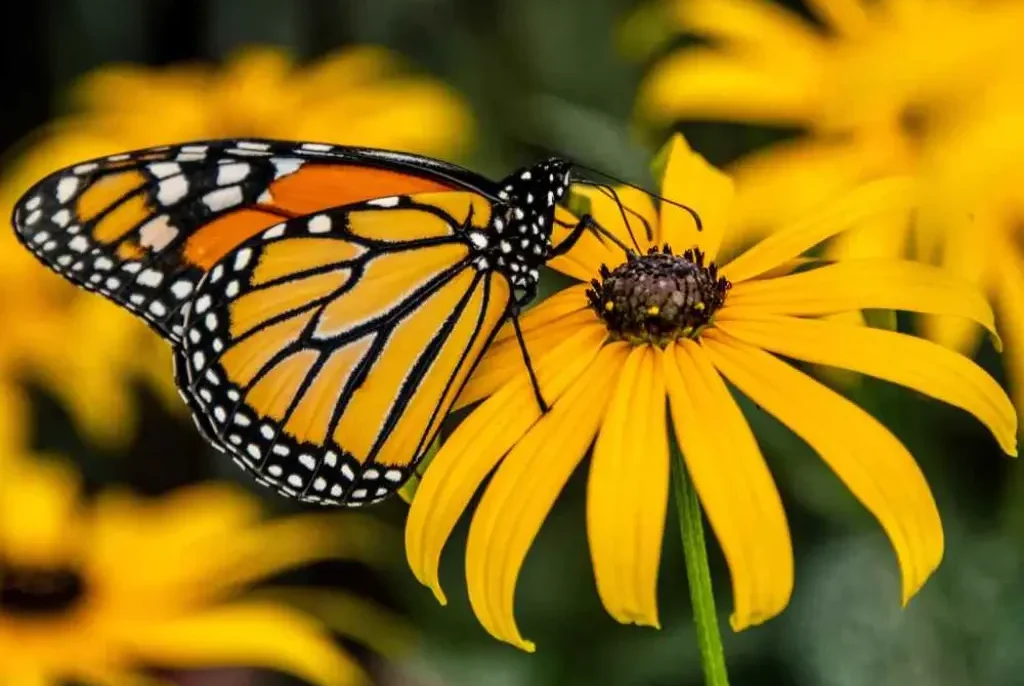
Black-eyed Susans are known for their bright yellow petals and dark centers.
They are excellent for attracting butterflies and various bee species.
- Growing Conditions: Full sun, well-drained soil
- Bloom Time: Summer to fall
6. Salvia (Salvia spp.)

Salvias are available in many varieties, all of which are excellent for attracting pollinators. Their tubular flowers are especially favored by bees.
- Common Species: Salvia officinalis (Common Sage), Salvia nemorosa (Wood Sage)
- Growing Conditions: Full sun, well-drained soil
- Bloom Time: Late spring to fall
7. Zinnias (Zinnia spp.)

Zinnias are annuals that produce a profusion of brightly colored flowers, making them highly attractive to butterflies and bees.
- Growing Conditions: Full sun, well-drained soil
- Bloom Time: Summer to frost
8. Asters (Aster spp.)

Asters bloom in late summer and fall, providing an essential nectar source when many other flowers have faded.
- Common Species: Aster novi-belgii (New York Aster), Aster novae-angliae (New England Aster)
- Growing Conditions: Full sun to partial shade, well-drained soil
- Bloom Time: Late summer to fall
9. Sunflowers (Helianthus spp.)
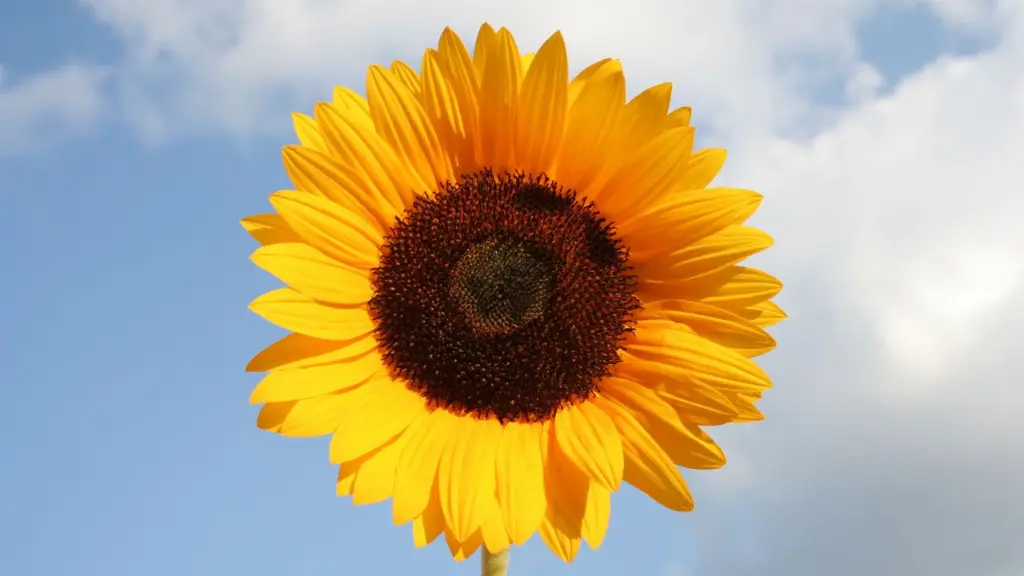
Sunflowers are towering annuals that produce large amounts of pollen and nectar, attracting bees and butterflies.
- Growing Conditions: Full sun, well-drained soil
- Bloom Time: Summer to early fall
10. Buddleia (Buddleia davidii)
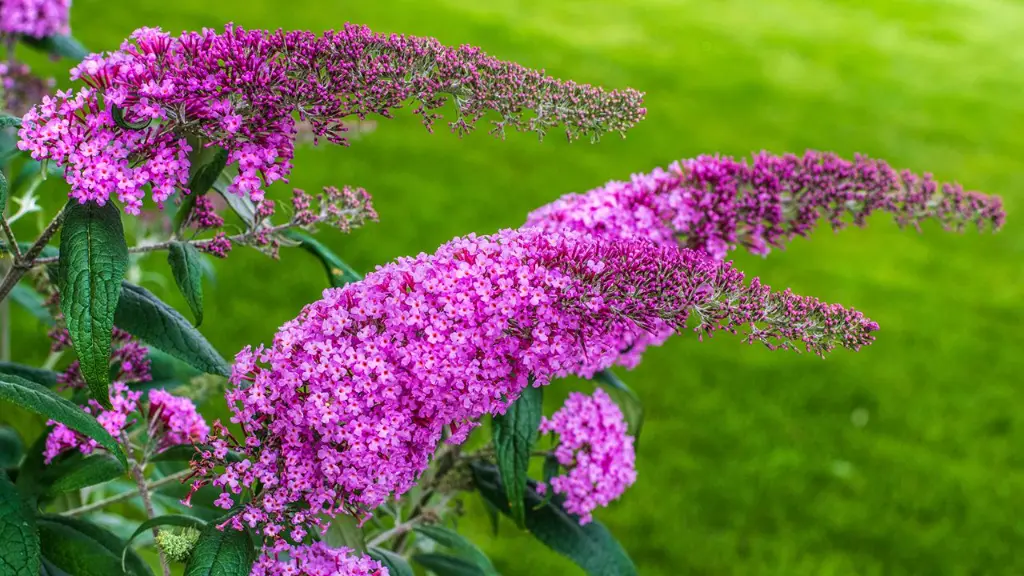
Also known as the Butterfly Bush, this plant lives up to its name by attracting numerous butterflies and bees with its fragrant, nectar-rich flowers.
- Growing Conditions: Full sun, well-drained soil
- Bloom Time: Summer to fall
Seasonal Care Guide
To ensure your pollinator garden thrives year-round, here’s a seasonal care guide for some of the key plants mentioned.
| Plant | Jan | Feb | Mar | Apr | May | Jun | Jul | Aug | Sep | Oct | Nov | Dec |
|---|---|---|---|---|---|---|---|---|---|---|---|---|
| Milkweed | Yes | Yes | Yes | Yes | ||||||||
| Lavender | Yes | Yes | Yes | Yes | Yes | Yes | Yes | |||||
| Coneflower | Yes | Yes | Yes | Yes | Yes | Yes | Yes | |||||
| Bee Balm | Yes | Yes | Yes | Yes | Yes | Yes | Yes | |||||
| Black-eyed Susan | Yes | Yes | Yes | Yes | Yes | Yes | Yes | Yes | Yes | |||
| Salvia | Yes | Yes | Yes | Yes | Yes | Yes | Yes | Yes | ||||
| Zinnias | Yes | Yes | Yes | Yes | Yes | Yes | ||||||
| Asters | Yes | Yes | Yes | Yes | Yes | Yes | Yes | Yes | ||||
| Sunflowers | Yes | Yes | Yes | Yes | Yes | Yes | Yes | |||||
| Buddleia | Yes | Yes | Yes | Yes | Yes | Yes | Yes | Yes |
Planting Tips
- Milkweed: Sow seeds directly in the garden in early spring or fall.
- Lavender: Plant young plants or cuttings in spring.
- Coneflower: Plant in spring or early fall.
- Bee Balm: Best planted in spring or fall.
- Black-eyed Susan: Plant seeds or transplants in spring.
- Salvia: Plant in spring after the last frost.
- Zinnias: Direct sow seeds in late spring.
- Asters: Plant in spring or fall.
- Sunflowers: Sow seeds directly in the ground after the last frost.
- Buddleia: Plant in spring.
Pruning and Maintenance
- Milkweed: Minimal maintenance needed, cut back old stems in late winter.
- Lavender: Prune back after flowering to maintain shape.
- Coneflower: Deadhead spent blooms to encourage more flowers.
- Bee Balm: Divide every 3-4 years to prevent overcrowding.
- Black-eyed Susan: Deadhead to prolong blooming.
- Salvia: Prune spent flowers to encourage more blooms.
- Zinnias: Deadhead regularly to encourage more flowers.
- Asters: Cut back in late fall to prevent disease.
- Sunflowers: Stake tall varieties to prevent them from falling over.
- Buddleia: Prune back hard in early spring to promote vigorous growth.
Watering and Fertilizing
- Milkweed: Water well until established, then drought-tolerant.
- Lavender: Requires minimal water once established, avoid overwatering.
- Coneflower: Water regularly until established, then fairly drought-tolerant.
- Bee Balm: Keep soil consistently moist.
- Black-eyed Susan: Water regularly, especially in dry periods.
- Salvia: Moderate water needs, do not overwater.
- Zinnias: Regular watering, especially during dry spells.
- Asters: Regular watering, especially during dry periods.
- Sunflowers: Water deeply and regularly.
- Buddleia: Moderate water needs, ensure good drainage.
Fertilizing Tips
- Milkweed: Generally does not need fertilizing.
- Lavender: Light feeding in spring with a balanced fertilizer.
- Coneflower: Light feeding in spring.
- Bee Balm: Benefits from a balanced fertilizer in spring.
- Black-eyed Susan: Fertilize in early spring if soil is poor.
- Salvia: Light feeding in spring.
- Zinnias: Benefit from a balanced fertilizer every few weeks.
- Asters: Light feeding in spring.
- Sunflowers: Fertilize with a balanced fertilizer at planting time.
- Buddleia: Fertilize in spring with a balanced fertilizer.
Designing Your Pollinator Garden
Garden Layout
When designing a pollinator garden, consider the following tips:
- Grouping: Plant in groups or clusters to make it easier for butterflies and bees to locate flowers.
- Bloom Continuity: Ensure there are plants flowering throughout the growing season by choosing a mix of early, mid, and late bloomers.
- Diversity: Include a variety of flower shapes, sizes, and colors to attract different pollinator species.
- Shelter: Provide shelter and water sources for pollinators, such as rocks for basking and shallow dishes of water with stones for landing.
Sample Garden Plan
| Section | Plants Included | Purpose |
|---|---|---|
| Sunny Border | Sunflowers, Lavender, Coneflowers, Black-eyed Susan | Attracts a variety of bees and butterflies |
| Shady Area | Asters, Bee Balm, Salvia | Provides blooms in less sunny spots |
| Water Feature | Shallow dish with stones, surrounded by Zinnias and Milkweed | Drinking spot for pollinators |
| Wildflower Patch | Mix of native wildflowers, including Milkweed and Coneflowers | Attracts native pollinators |
Benefits of Attracting Butterflies and Bees
Ecological Impact
- Pollination: Butterflies and bees play a crucial role in the pollination of many plants, which is essential for food production and biodiversity.
- Biodiversity: A garden full of diverse plants and pollinators contributes to local biodiversity and a balanced ecosystem.
Personal Enjoyment
- Aesthetics: Butterflies and bees add movement and color to your garden, enhancing its beauty.
- Education: Observing pollinators can be an educational experience, especially for children, teaching them about nature and the importance of conservation.
Challenges and Solutions
Pesticide Use
- Problem: Pesticides can harm butterflies, bees, and other beneficial insects.
- Solution: Use organic and natural pest control methods. Encourage natural predators like ladybugs and birds.
Habitat Loss
- Problem: Urbanization and agricultural expansion reduce the available habitat for pollinators.
- Solution: Create pollinator-friendly spaces in your garden, even small urban gardens or balcony planters can make a difference.
Climate Change
- Problem: Changes in climate can affect the availability of nectar and pollen.
- Solution: Plant a variety of species that can thrive in different conditions and provide year-round blooms.
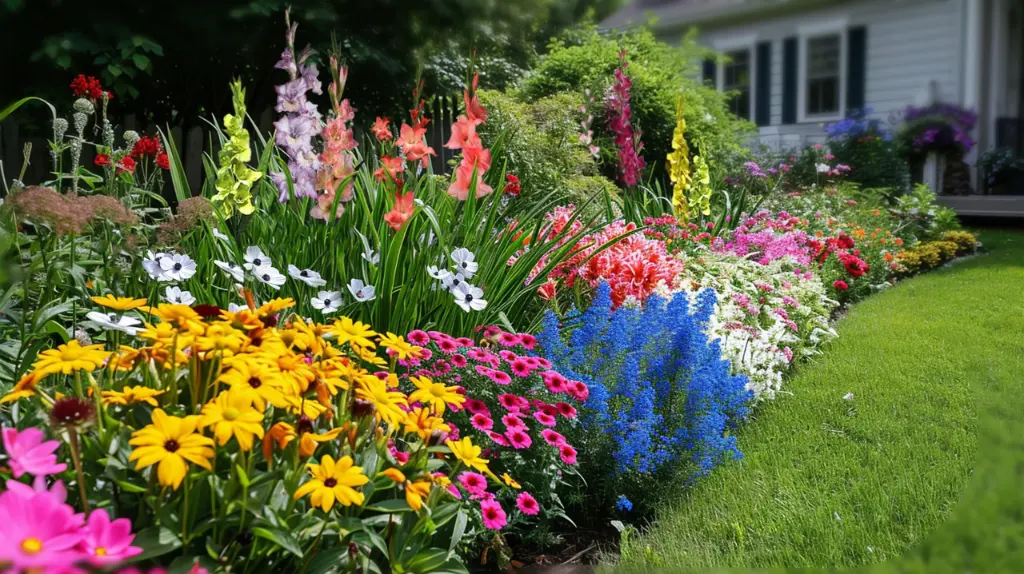
Creating a garden that attracts butterflies and bees is not only beneficial for the environment but also immensely rewarding. By choosing the right plants and following proper care practices, you can enjoy a vibrant and dynamic garden filled with the delightful presence of these essential pollinators. Happy gardening!



